John M. from Highland Park, IL asks, “why is my elliptical rough when first starting out, but then smooths out after I have been riding it about 3 minutes? After it warms up, everything works as it should, it’s just unpleasant starting out. Do I need to have you come out for service?”
Great question John, thank you for sending that in. This is a behavior that has been noticed by many elliptical users, and the solution, while goofy, works. I can’t speak to the condition of the remainder of your machine, but it is not necessary to have us out for this issue alone, provided it resolves itself soon after you begin your workout.
Most ellipticals utilize a wheel of some sort, with a convex or concave wheel running on a rail or within a track respectively. These wheels are generally made of a material similar to an inline skate or skateboard wheel. Depending on the manufacturer, and sometimes varying from model to model, wheels may be harder or softer to match the machines intended use. Generally, a softer wheel material will result in a smoother ride, ideal for a home setting, whereas a harder wheel will wear down much less quickly and is better suited for a commercial setting.
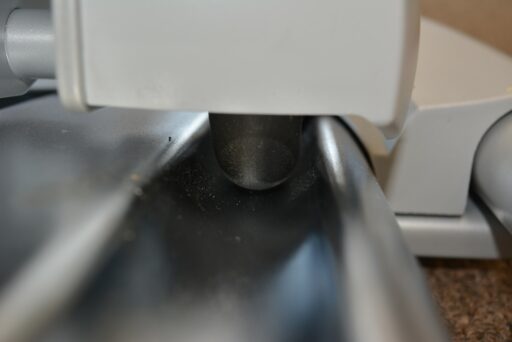
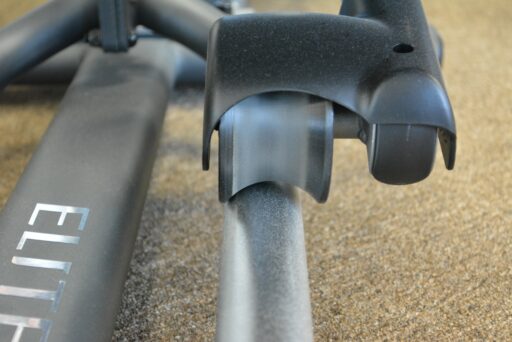
We find this issue to be more prevalent on the home use models and their softer wheels. We have discovered that as the user works out, heat builds up from the friction between the wheel and the rail/track that it rides on. This softens the wheel even further enabling the user to experience a highly cushioned workout, but this also results in the wheels becoming out of round when cooling.
Once the user completes their workout, the warm, soft wheels are then left sitting on the hard rails. As they cool, the wheel material is so soft and the rail is so hard that the wheel surface begins to conform to the shape of the rail. This is generally not enough of a difference to be visually apparent, but you will certainly notice it during your next workout. After the user warms the wheels back up, they soften and return to their round, even shape.
Now, how to get around this. If your wheels are internal and inaccessible, unfortunately, there is nothing that can be done. If your wheels are accessible, you can lift the pedal arms on to blocks which will allow the wheels to cool down with no weight on them. Due to gravity, this may not solve 100% of the roughness but it will solve 95%, if not more. Yoga blocks or massage rollers are just about perfect for this, in a pinch you can use those guest room throw pillows no one ever uses for anything else.

Using proper lifting technique (your knees, not your back!), lift each pedal arm, one at a time. Rest a block on a stable portion of the wheel rail or floor. Then, lower the pedal arm back down onto the block, ensuring the wheel is not resting on anything. Repeat for the other side. You may need to adjust the placement of the flywheel to allow the arms enough room to be properly propped up. Use wooden or foam blocks to avoid scratching the rails, metal items should never be used. While the pedal arms are propped up and off their tracks, do not use the unit, it is unsafe to operate. Prior to your workout, perform the same steps in the reverse order to prepare your elliptical for use.
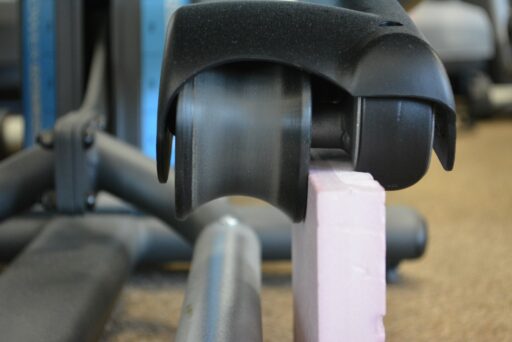
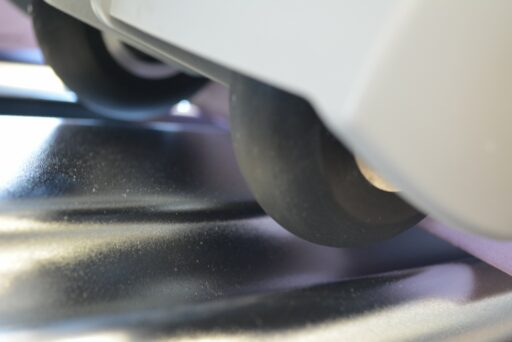
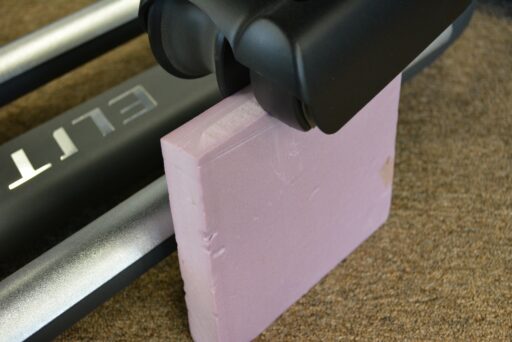
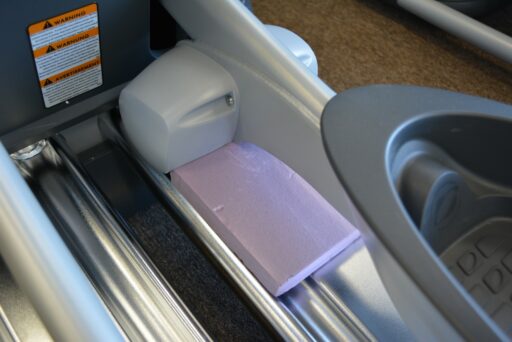
For this demonstration, I used a piece of rigid foam insulation I had laying around the garage. These are available at any home project store and are easily cut to the appropriate size with a utility knife.
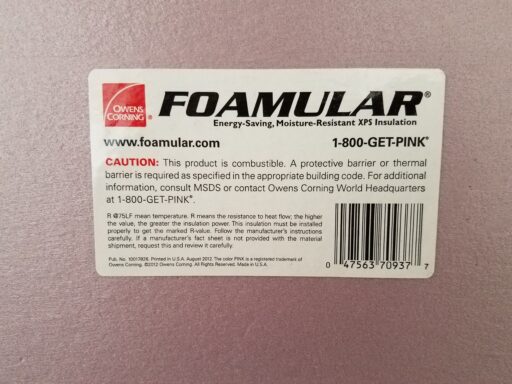
Either way, John, don’t worry. If you choose to raise your pedal arms for your own comfort please do so, but there is absolutely no reason to not leave them as is. That short time the wheels are out of round will not cause any damage to the machine and is how it was designed to be operated. Thank you again for your question!
A special thanks to Dale Noack at 2nd Wind Exercise in Aurora, IL for letting us use their showroom for these equipment photographs.

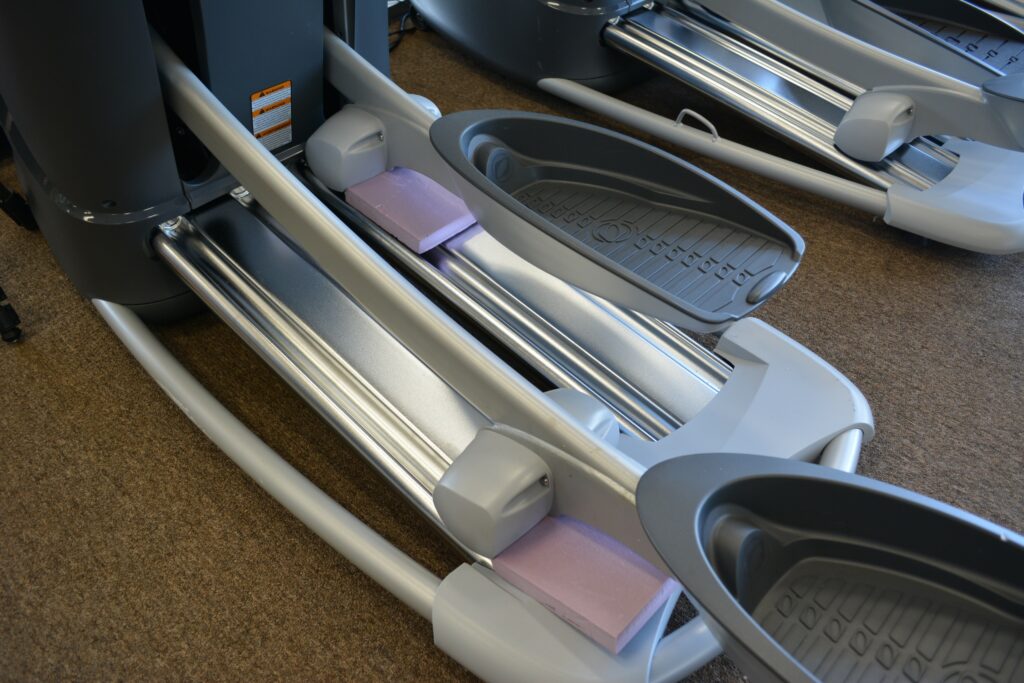
Great information. Glad to see you guys are putting out useful information easily understood. Used your services in the past with very good results.
Great information. Glad to see you guys are putting out useful information easily understood. Used your services in the past with very good results.
Happy to hear you found it useful, Bob. If you have any questions you would like to see answered in the future please email us at service@hnpfit.com!
Which is better a treadmill or elliptical?
Great question Susan, thank you for asking! Please see our article “Which is better, a treadmill or an elliptical?” and let us know if you have any more questions.
Thanks for a Great information about Elliptical . Glad to see you guys are putting out useful information easily understood. Used your services in the past with very good results.your information really work.i have a questions that “Which is better, EXERCISE BIKES or an elliptical?” tell me about this questions.
Great question, and we’ll certainly cover that in our next blog post! In the meantime, check this out from our friends at Home Fitness Up: https://homefitnessup.com/recumbent-bike-vs-elliptical/
My elliptical is just the opposite. It starts off great, then after 5 minutes or so. I hear a noise then the wheel starts jumping off the track. is this because of the same issue or something else?
Hi Bryan, thank you for your question. That sounds like a different issue, have you checked the tracks for alignment and ensured the wheels are mounted correctly and don’t have any lateral play?
My elliptical has been working great for A couple. years & I’ve been able to complete my 2miles with full incline a day on it without any problems . But this week it’s became extremely hard to complete the same to 2 miles even with no No inclineWhat could b to blame & how do I fix it?thanks!
Hi Jenny, thank you for your question!



First off, I need to say it is very difficult to diagnose a machine unseen, but I’ll give it my best shot to point you in the right direction. It sounds as if the resistance on your unit has increased, making it more difficult to complete your two mile workout, is that correct? If so, we generally find that can be due to three different potential issues.
The first is easy to diagnose once you can see inside the machine. Some require partial disassembly to get a good look in there. Take a look at the drive belts. Are they centered on their pulleys? If not, are they so far off center that they are rubbing on the internal frame? If so, that will cause a drastic increase in resistance. Recenter the belt, rotate everything by hand (VERY carefully, be aware of pinch points!) and hopefully the belt stays centered. if not, check the alignment of the internal pulleys to determine if there is a pulley out of alignment, failed bearing, or anything else that would cause these pulleys to not run true.
The second and third applies only to machines utilizing an eddy current brake, a magnetic braking system commonly used on residential ellipticals and bikes.
With all your digits away from the insides of the machine, raise/lower your resistance at the console. You should both hear and see a resistance motor turning to increase or lessen the resistance. If that motor is not turning, there is a good chance the motor needs to be replaced. If it is turning, check the eddy brake next.
Find your eddy brake, which is about the diameter of a dinner plate:
The color of the inner plastics may be black, green, or another color.
Next, with the resistance set on your elliptical at the highest level, look in between the metal outer wheel and the inner plastics. You should see a gray metal arc within the outer wheel, those are the magnets that add resistance to the outer metal wheel when it is rotated. There may be one or two of them, depending on your specific model.
Then, lower the resistance. You should see both (or one if your machine only has one) of those inner arcs retract inward, further away from the outer wheel. If one or more of those arcs does not move, you can disassemble the eddy brake and rebuild it with new internal cables, or replace the eddy brake entirely, the latter being the simplest repair.
Let us know what you find, and once more, there may be something going on here I did not cover at all, nothing is ever better than a trained and certified technician diagnosing the machine in person!
My elliptical machine has been working well for the past years and I never had a problem with it. Today half of concave wheel on the left side under the foot bed cracked off (it looks like wax). Is there a way to replace/repair it? Thanks
Hi Terry, thank you for your question.
From the sounds of it, your wheel has cracked in half, something we do see from time to time. This is a replaceable part and should be reparable. As a general rule we always replace all wheels at the same time, as they all have the same amount of wear on them.
This has been very useful. I just noticed this problem yesterday. I took two days off and when I went back to it the ride felt rough. For me it was all the way through. I added some lube, a thin layer, because I realized I have not done this for weeks and that is when I realized a lot of shavings from the roller. This and the heat of the rail I assume is from friction. Any thing else I can do? The wait time for the manufacturer was well over an hour. I do not know if resting the rollers after workout will do it or do I need to lube the rollers more? Also, the manual says silicone lubricant, not a specific kind, does that mean a WD-40 would work? It only stresses not to use a petroleum lubricant. Thanks!
Hi Phil, thanks for your question!
It sounds like there may be debris on your wheels, causing an uneven rotation. Can you take a look and see if you find any buildup?
Use lube VERY sparingly on your wheels, more lube will attract more dirt, and can become an even larger issue. Other than that, avoid WD-40, it’s not a lubricant and can damage components of the machine.
Let us know what you find!
Thanks for the fast reply Dan. After reading your comment I lifted the leg and inspected the roller and found it to be cracked. That is why all that debris, or roller crumbs as I call it, is all around. My next question is can I work out on it? I have to call Nautilus tomorrow because I have only had the machine for 3 weeks. What is a good lube to use? They did not name a brand and said to do it weekly. I always apply a thin layer. Thanks again.
Hi not sure if my other comment went through. Here it is again. I found that there is cracking on the roller. Can I still use it? Any quick fix until I get a new one?
Happy to help!
Yes, call your manufacturer and request a full replacement set. We always replace wheels as a pair or set of four as they all have the same amount of wear on them.
In general, we do not recommend lubing wheels due to the lube’s tendency to attract dirt. When absolutely necessary, we put a very small amount of lube on each wheel’s surface (one or two drops), then pedal the machine. The lube spreads across the entire rail and wheel, at which point we wipe the wheels and rails down heavily to remove all excess. The less lube that is left on the rails, the less likely it is to attract dirt and buildup.
In the meantime, it would be a safety hazard for you to use the machine as the deterioration of the wheels could result in injury. Generally, a silicone lubricant is recommended for these, but as you will have Nautilus on the phone, I would recommend you ask them for their thoughts on the preferred lube for your machine.
I recently bought a gently used elliptical BODYCRAFT ect 400g from a gym that was closing. The owner says she can count the number of times the gym members used the machine. I find the initial resistance setting to be too difficult for a comfortable gradual build for completing the workout. Is it a way to reset the resistance in the machine’s assembly? I‘be used many different models of elliptical and I feel there is definitely something off with the resistance.
Hello Patience, thank you for your question!
Without being able to diagnose the machine in person, it’s tough for me to say, but it sounds like there could be an issue with your resistance system. A reset is not possible to perform without opening the machine up and adjusting the internals. The possible causes of this issue:
-Servo motor out of calibration. The internal servo motor adjusts the resistance level. If the potentiometer on this motor is not communicating correctly, that can cause the resistance levels to be incorrect. This will most likely require servo motor replacement.
-Eddy brake out of calibration. The eddy brake uses a spring, cable and magnet system to adjust resistance levels. If the internal actuator is not properly aligned at the “0” setting, it can cause levels to be off. This is an adjustment a trained technician can make that should be included in a standard preventive maintenance service.
-Internal eddy brake cable issue. We do see the internal eddy brake cables have snapped somewhat frequently. If one cable snaps, your resistance will be at approximately 50% at level “0” and will increase as the levels increase. If both cables are snapped, it’ll be at 100% no matter what level is set. These will either require an eddy brake replacement, or an eddy brake rebuild which includes replacement of the cables and rollers. These rollers and cables should be replaced as a set as they both have the same number of wear hours on them.
-An out of alignment drive belt. If the drive belt becomes misaligned to the point it is off center and rubbing on the internal frame, the rubber-on-metal resistance will be very even and smooth, but make the machine harder to operate. This is an alignment a trained technician can make that should be included in a standard preventive maintenance service.
-Something else I’m not thinking of. What I’ve listed above are the most common issues we see, but there’s no replacement for having a trained tech assess your machine.
Let us know what you find!
My cross trainer is rubbing on one side against the plastic shell. But on the other side there is a bigger gap. Has it come out of line and how do add balance it out without a hammer!
Hi Philip, thank you for your question, I’m sorry it took me so long to respond, I didn’t receive a notification about your question.
Alignment issues are very difficult to diagnose remotely, the issue could be with just about every internal part on the machine. I wish I could be of more help, but your best bet is to open it up (or have a professional do so if you are not comfortable with it!) and start comparing the right and left sides, component by component. There’s a good chance a nut or bolt in there has come loose that just needs to be tightened back down, or it could be that a component has failed and is now out of alignment that will need to be replaced. Less common, but something we do see from time to time, is a cracked frame or frame weld that can cause this issue as well. If that is the case, the machine will not be able to be repaired, if the frame is still under warranty, contact your manufacturer for replacement.
Regardless, with things being so far out of alignment, I would not recommend continuing to use this machine until this alignment issue is resolved, as serious injury is likely.
Let us know what you find and if we can be of any more help!